15 Content Promotion Strategies That Work in 2023


You’ve done all the heavy lifting to produce a value-packed blog post that would resonate with your target audience and possibly even drive conversions.
But your blog can fall flat with low traffic and even worse engagement if you don’t create a solid content promotion strategy to get more eyes to your content.
Content promotion is sharing your content across multiple channels to maximize the reach and win more readers. Every time you hit publish on a new blog, you should have a few promotion tactics to reach the intended readers.
In this article, we’ll clue you in on 15 content promotion strategies to use in 2023 and reach a bigger audience with your content.
What is Content Promotion?
Content promotion is a way of increasing the visibility and traffic for your content – be it a blog post, an ebook, a social media post, or any other format. An effective promotion strategy ensures that your content delivers value to the right audience.
By bringing more traction and reaching the intended audience, your content can potentially ramp up conversions and engage your readers. That explains why Andy Crestodina famously said, “The best content doesn’t win. The best-promoted content wins.”
15 Content Promotion Strategies that Work in 2023
Your content promotion efforts can fall through the cracks and fail if you follow a half-baked strategy. Instead, you need an airtight plan for promoting your blog.
We’ve done the legwork to create this list of 15 content promotion tactics you can use in 2023. Let’s break down each tactic with examples and best practices.
1. Reach hyper-engaged audiences through content recommendation
Content recommendation is the technique of recommending content to users based on their interests, keywords, and past content preferences. A content recommendation engine offers targeted recommendations to third-party blogs.
Content recommendation is an excellent way to promote your content because it works like an ad without feeling as disruptive as one. You can organically place your blog at the bottom of a high-ranking website with relevant traffic and get more eyes to your content.
But how do you submit your blog for content recommendation engines? Simple – with Outbrain.
Outbrain works with some of the biggest media companies, like CNN, SKYNews, Der Spiegel, and more, to promote your content on these major websites. With Outbrain’s content recommendation ads, you can win 40% more engagement than display ads and maximize session time.
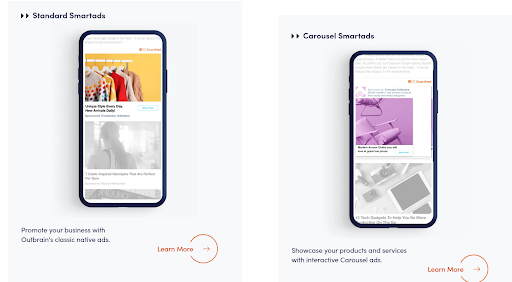
2. Share high-value content with your email list
Your email list targets people who are interested in your brand and want to get regular updates. They’re more likely to read your latest blog and share it further.
Email marketing remains the gold standard for personalized communication in a world of changing social media algorithms.
Follow these best practices to leverage your email list for content promotion:
- Invoke curiosity or intrigue subscribers with a catchy subject line
- Keep your email copy short and simple, backed by the right visuals
- Include a snippet of your blog to give readers a hint of what’s inside
- Add clear CTA buttons to drive traffic to your blog directly
Besides optimizing your email for readability, pick the right day and time to send out the newsletter. According to Campaign Monitor, Monday is the best day to achieve the highest open rate, and Tuesday gets the maximum click-to-open rates.
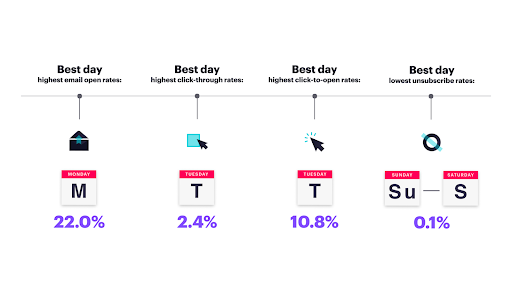
3. Create a distribution pipeline for social media
Promoting content on social media is a no-brainer. But there’s a catch to this content promotion tactic. You need a full-fledged distribution pipeline to repurpose your original content into platform-native social media content.
That’s not all. You must also create a research-backed schedule to publish these posts at the best times and hit the best engagement rate.
For example, if you’re repurposing and scheduling Facebook posts, convert your original blog into a short video with subtitles. This is because the native video format works well on Facebook. Use a scheduling tool to find the optimal posting times and schedule your posts. You can even use Instagram scheduling tools to plan your posting calendar.
Here’s how Plum promoted a research report through a LinkedIn carousel post. The post highlights the most important snippets from the report and includes a download link.
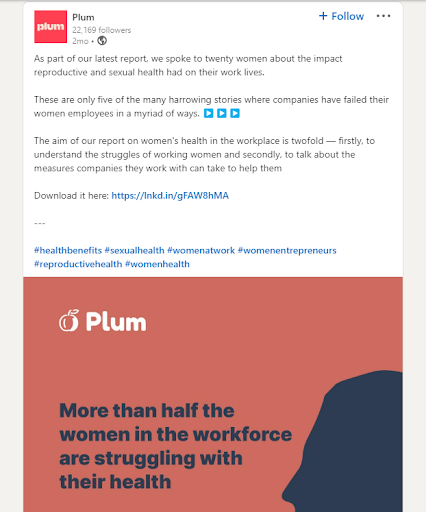
Most importantly, don’t limit yourself to the major social media channels when creating a distribution pipeline for social media. Analyze your user journey to understand where your target buyers ideally hang out and promote your content on all those channels, like niche communities.
4. Optimize on-page SEO to rank on search engines
Another straightforward content promotion tactic is optimizing your content for search engines. This is mainly about nailing the on-page SEO requirements to bag higher search rankings and boost the organic traffic coming to your blog.
Here are a few key factors to consider for getting more on-page SEO traffic:
- Choose high-volume or high-intent keywords relevant to your niche and buyers
- Add keyword-optimized meta title, description, and page headers
- Meet the search intent with original and value-packed content
- Use tools like Clearscope or Surfer SEO to include maximum keywords in your content
- Contextually place internal links to maximize session time per user
You can also work with a digital marketing mentor or agency to take care of on-page SEO on your behalf. Winning a higher search ranking and organic traffic promises excellent ROI for your marketing efforts.
5. Make your content easily shareable for readers
While you focus on promoting your content on multiple channels, remember to let readers do the same on your behalf. Add different elements to your website interface, making it easy for readers to share your blog with their network.
For example, GatherContent spotlights tweet-worthy ideas in between its blogs. So, if you’re reading one of their blogs, you’ll likely find this effortless way of sharing a good idea with your audience and automatically promoting GatherContent’s blog.
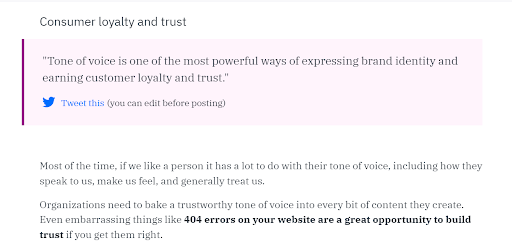
Another fantastic way to encourage readers to share your blog is strategically placing social media widgets in the interface. Asana adds a sticky banner with the blog topic and social media widgets at the top of every blog to help readers easily share the post wherever they prefer.
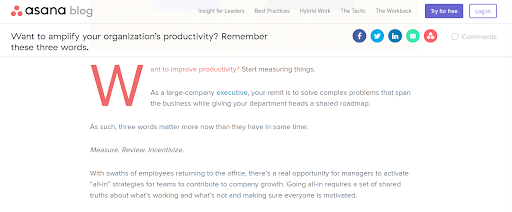
You can also improve your content’s discoverability by adding on-brand visuals. When users run an image search, these visuals would show up and redirect them to your original content. Case in point: Whatfix creates custom blog graphics to get more readers through image SEO.
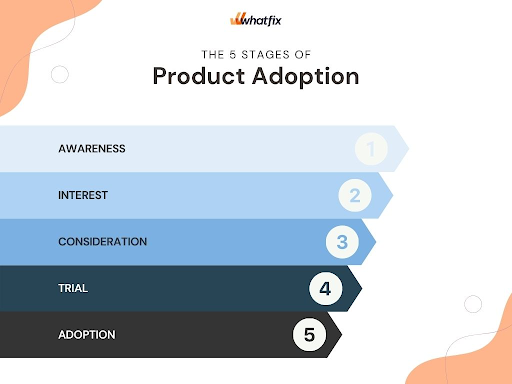
6. Promote popular pieces through CTA banners
You can also promote your content internally by placing CTA banners for these pieces within other blogs. Identify your most popular blogs and add a recommended reading section within your blog interface to direct readers to your high-performing articles.
Here’s how HelpScout nudges its readers to the more popular blogs using CTA banners. This minimal banner tells readers the blog title, creating curiosity to read and understand what’s inside.
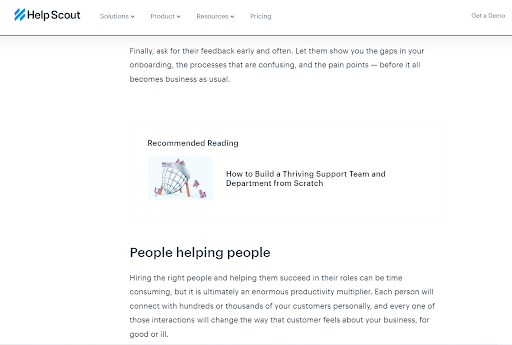
7. Approach brands for a newsletter swap
A newsletter swap is a less popular yet effective content promotion strategy. It’s as simple as it sounds – swapping a feature in your newsletter in exchange for a feature in someone else’s newsletter.
In this win-win arrangement, you can collaborate with relevant brands to exchange content features on your newsletters. However, choose a suitable brand partner to ensure you’re reaching people matching your ideal customer profile rather than any random folks.
Here’s a great example of a newsletter swap. Marijana Kay, a freelance writer, featured a blog by Kat Boogaard, another freelance writer.
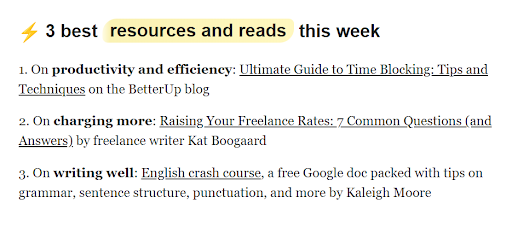
Then, Kat Boogaard also shared one of Marijana’s posts in her newsletter. Since both have writing businesses and similar audience groups, this newsletter swap gives more visibility to their content and increases their readership.
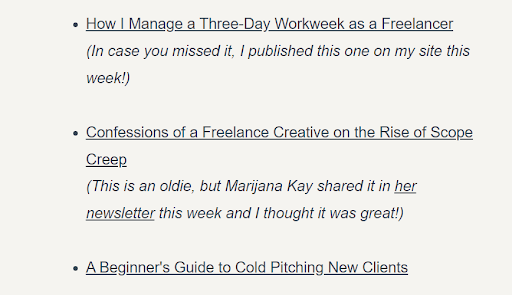
8. Try a social media swap with a partner brand
A social media swap is a different take on newsletter swaps. Instead of featuring each other’s content in an email newsletter, brands share their content on their social media handles. It combines social media distribution and the swapping technique to promote your content.
But finding good partners for swapping these posts is the tricky part. You want to collaborate with brands that don’t compete against yours but target a similar audience bracket.
Besides, you’d also need a decent number of followers to attract good brands for such a partnership. So, this tactic will only apply if you already have a strong social media following. If you do, then you can feel confident to approach profitable brands to collaborate for a social media swap.
9. Reach out to niche influencers
Any content promotion strategy aims to increase the number of readers landing on your content. What better way to achieve this goal than tapping into an influencer’s massive audience?
You can promote your content effectively by working with niche influencers with a sizable follower base. By sharing your content on social media, influencers can build more backlinks for your website and encourage their followers to read your content.
Finding such influencers is easy with social media searches and tools. For example, if you’re a B2B brand looking for industry experts with a strong influence, use tools like Sales Navigator to find and shortlist the best brand-fit influencers. Export these leads from Sales Navigator, and you’re ready to send your pitch messages.
Go a step ahead and automate the process of connecting with influencers using proper outreach tools. Since most influencers have overflowing inboxes, send follow-up emails to get a positive response to your pitch and take the conversation forward.
10. Mention others and request them to share
Another surefire way to promote your content is by including individual contributors in your blog and requesting them to share the published version. Interview subject matter experts (SMEs) or get a quote for your content. This will add a layer of authority and credibility to your blog while increasing your chances of content promotion.
By requesting a subject matter expert to share your post, you can target a hyper-engaged group of people who follow and trust that expert. This can also increase your chances of multiplying the blog traffic and boosting conversions.
Here’s a great example showcasing how experts can promote your post on their profiles and bring more attention to your content.
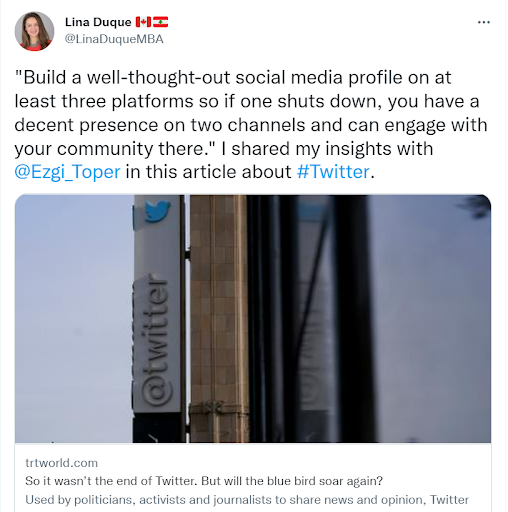
11. Republish your content on community-based platforms
Once you’ve published your blog on your website, you can republish it on community-based platforms to increase backlinks and traction. Platforms like Medium, Mashable, Hacker News, and more are designed to improve content discovery and build backlinks.
Since these platforms have a massive user base of diverse readers, you might be unable to reach your exact target audience. However, they can drive decent engagement and improve the reach of your content. Besides posting your content, make sure you engage with others’ posts through comments to increase engagement on your posts.
Syndicating content through these platforms also enhances brand awareness. That means you’re bringing more prospects into your sales funnel and nudging them to purchase.
12. Repurpose content into a podcast or video
Video content is gaining more momentum than ever before. Unsurprisingly, 66% of consumers have watched video content to learn more about a brand. So, repurposing your written content into a video is one of the most promising ways to promote it.
With the demand for video outpacing the need for textual content, brands are increasingly turning snippets of their blogs into videos. Create short social media videos to appeal to people quickly browsing their feeds. Then link to longer, deep-dive videos if anyone wants to understand the topic better.
Salesforce presents a prime example of this technique. The B2B brand converts almost all its blogs into YouTube videos to engage its visual learners. These videos link to the original blog if viewers want to read the textual version.
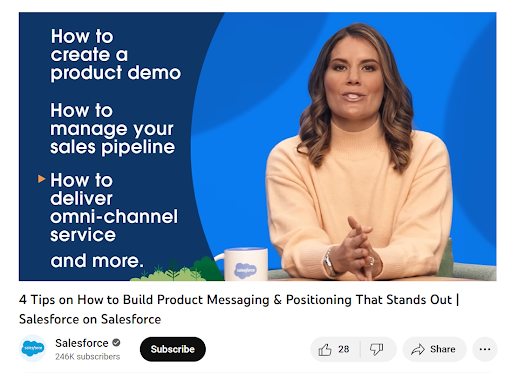
Besides creating marketing videos, you can also repurpose your content into podcasts. This ensures that users who prefer listening over reading can consume your content effortlessly. Here’s a great example by Lodgify. They have a built-in podcast narrating the entire blog for people who don’t want to read.
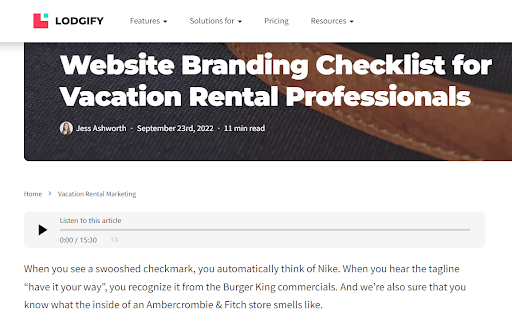
13. Use paid promotion for targeted reach
Paid marketing is a tried-and-tested content promotion tactic. Organic promotion strategies can only take you so far, with little to no guarantee of a decent ROI. Conversely, a targeted paid ad campaign reaches the right people and hits all your promotion goals.
You can run paid promotion campaigns on:
- Google: Run Google search ads to get some precious real estate on SERPs.
- Facebook: Use Facebook marketing ads to increase the reach of your business page content.
- Instagram: Create short-form videos or carousels and run them like ads to send users to your blog.
- Outbrain: Choose from a range of ad formats, including standard text and image ads, video ads, clip ads, carousel ads and more, to gain exposure to relevant audiences on the open web.
Targeted pay-per-click, native advertising, and social media advertising can get more eyes to your content, boost brand recall, and cut through the noise to promote your content. You can also use these ads for retargeting people who showed interest in your blog and visited your website or took some action.
14. Reach out to bloggers and ask for a backlink
A value exchange partnership with bloggers is another excellent content promotion tactic. You can reach out to bloggers in your niche to establish value-driven relationships where you ask them for a backlink and offer them something in return, like a social media feature.
A cold email is the perfect way to connect with these bloggers and pitch your offer. Personalize this email by referencing a latest accomplishment they’ve had or a detail you find interesting.
Keep the email more centered to them instead of you and focus on how they can benefit from your offer. More importantly, remember to use a verified email to increase your email deliverability.
This value exchange can get you more backlinks for your content – the more referring domains, the higher your domain authority. So, build such blogger partnerships to promote content as soon as you hit publish.
15. Leverage guest blogging to build links
A content promotion strategy is virtually incomplete without guest blogging. Guest blogs help you earn backlinks, improve your site’s search engine ranking, and eventually rank on the top results for relevant keywords.
Here are a few actionable ways you can use guest blogging for content promotion:
- Conduct meaningful guest post outreach to connect with authoritative publications
- Manually identify broken links on high-authority websites and reach out to them with more valuable content
- Use a brand monitoring tool to identify the publishers mentioning your competitors and send a guest blog pitch to them
- Build positive connections with editors and content managers at industry-leading publications
Level Up Your Content Promotion Strategy Today
Creating quality content is just the first step. You need an effective content promotion strategy to maximize your content’s reach and drive more conversions. That’s why your content marketing efforts are incomplete if you leave content promotion as an afterthought.
Bookmark this detailed guide on 15 content promotion strategies and create your own with a combination of these tactics. Use the most feasible techniques to promote your next piece of content, and watch your content reach soar.
The post 15 Content Promotion Strategies That Work in 2023 appeared first on English (US).